How to Install an SSL/TLS Certificate in cPanel Without Technical Knowledge
Quick Guide to Install an SSL/TLS Certificate in cPanel & Prevent Not Secure Warning
If you’re looking to install an SSL/TLS certificate through cPanel, then we’ve got your back. Here, in this guide, we’ll show you a step-by-step process for installing an SSL/TLS certificate, even if you don’t have any technical knowledge.
But, before you proceed further with an SSL/TLS certificate installation process, be sure you’ve completed the certain process that’s required to move further with installation, and they’re:
- Purchased or renewed your SSL/TLS certificate.
- Generating CSR with SHA – 2 Algorithm. – Click here to generate CSR in cPanel.
- Server Certificate: The server certificate is a Certificate you get from the CA (Certificate Authority) you purchased your SSL/TLS certificate for your website. Usually, it’s sent through email (an email address you registered with the CA at the time of purchasing an SSL/TLS certificate). If you haven’t received an email, then go to Account Dashboard from the CAs website and click on your order and download it.
- Intermediate Certificate: Intermediate Certificate is a “Chain of Trust” certificate between the root certificate and an end-entity certificate. Suppose you’ve received the Certificate through an email. In that case, you might find there’s more than one Certificate in the ZIP folder, and that folder contains your Intermediate Certificate.
- Private Key: Private Key is an essential file that should be on your server or with you if you’ve generated CSR using the free CSR generation tool.
Here’s How to Install an SSL/TLS Certificate in cPanel
Once you download your SSL/TLS certificate follow the below steps to install an SSL/TLS certificate through cPanel:
Log In to Your Website’s cPanel Account
The first step is to log into your website’s cPanel account. You can log in through the cPanel URL provided by your hosting provider or else https://www.domainname.com:2083.
Note: You’ll encounter “Your connection is not private” or something like that because SSL/TLS certificate is not installed or else it’s expired.
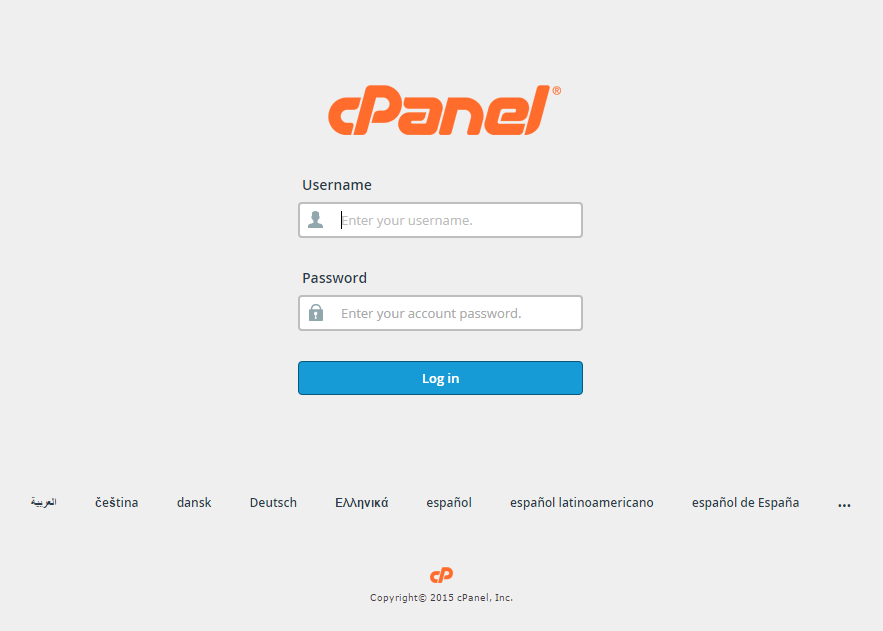
Select SSL/TLS From Security Section
From cPanel Homepage, navigate to the security section or search SSL from the search bar and select the SSL/TLS option.
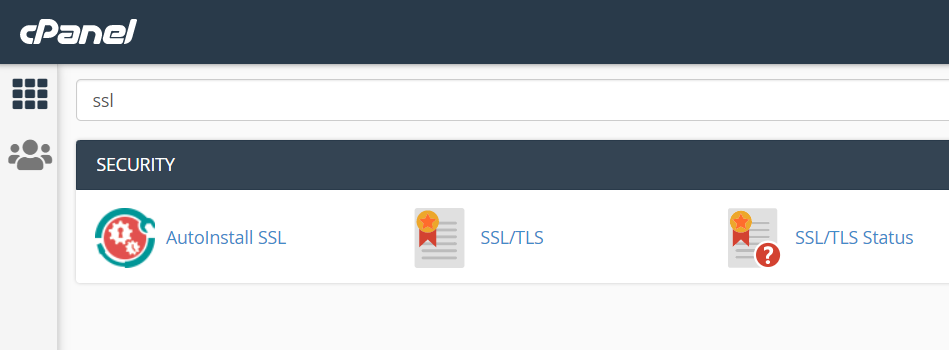
SSL/TLS Manager
Once you click SSL/TLS option, you’ll be redirected to SSL/TLS Manager

Select Certificates (CRT) Option
Go to the second last option, Certificates (CRT), and click on that Generate, view, upload, or delete SSL certificates link. It’ll take you to Upload a New Certificate, where you’ll be asked to upload an SSL/TLS certificate issued by a trusted CA from whom you purchased it.
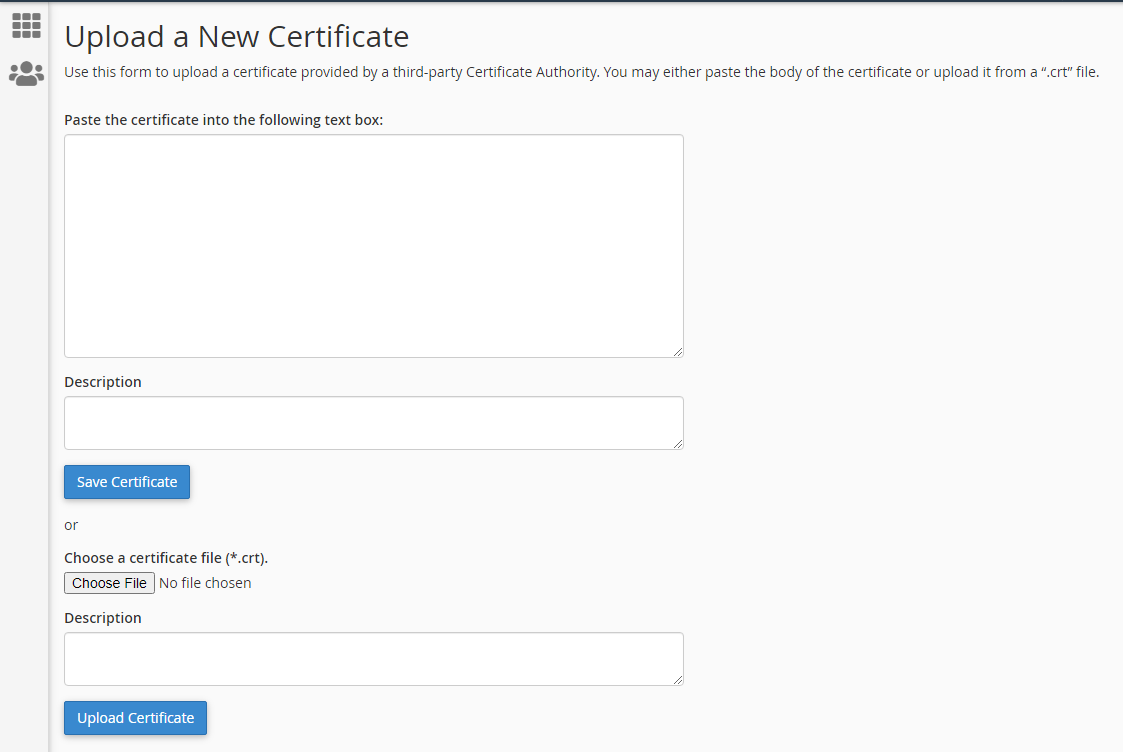
From the zip folder, select “.crt” file open in a text editor like Notepad and copy all the content
that starts with ——-Begin Certificate——- and ends with ——-End Certificate——- and paste it into the text box and click Save Certificate button
OR
Click Upload Certificate and browse through that SSL certificate folder, and select “.crt file.”
It’ll redirect to another page that will display Installed Certificates for the Domain (s): www.examplesite.com (auto-detected). Under that, click on the Go Back button, and it’ll take you to the same Upload a New Certificate page, which will show you the list of Certificate uploaded on the server:


Manage SSL sites
Under Install and Manage SSL for your site (HTTPS), click on the link Manage SSL sites. You will be redirected to the Manage SSL Hosts page that allows you to configure SSL for your domains.
Here, you’ll find two option under the Install an SSL Website section:
- Browse Certificates
- Drop Down Menu named Domain
If you want to go with the first option,
Browse Certificates: Click on Browse Certificates. It’ll show you the Certificate that you uploaded on your server along with for which Domain it’s issued, who’s the issuer (Certificate Authority Name), and its expiration date.
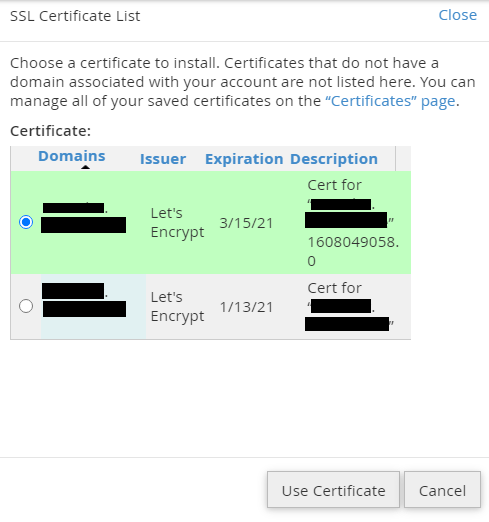
Domain: From Domain, click drop-down Menu and select domain name for which you want to install SSL/TLS certificate and click on Autofill by Domain button.

Certificate Bundle
Usually, the CA Bundle is automatically fetched. If it isn’t, copy and paste the CA Bundle file content provided to you by your CA or visit their site and search and find the appropriate CA bundle file, download, and copy & paste the content.
Once you complete these steps, go to the bottom of the page and click on Install Certificate.

Automatically Force Your Site Visitors to HTTPS Connection
By completing the above steps, an SSL/TLS certificate is installed on your website. Now, you’re required to redirect HTTP to HTTPS automatically, so your website visitors can automatically get redirected to the secured HTTPS version.
Implementing HTTP to HTTPS Enforcement for Main Domain
In cPanel, go to the Domains section and select Domains.


HTTPS for Addon Domains
If you’ve any addon domain, then you may require to create a .htaccess file. However, if you already have an existing .htaccess file, then no need to create it. (In Files section, click File Manager >> public_html)
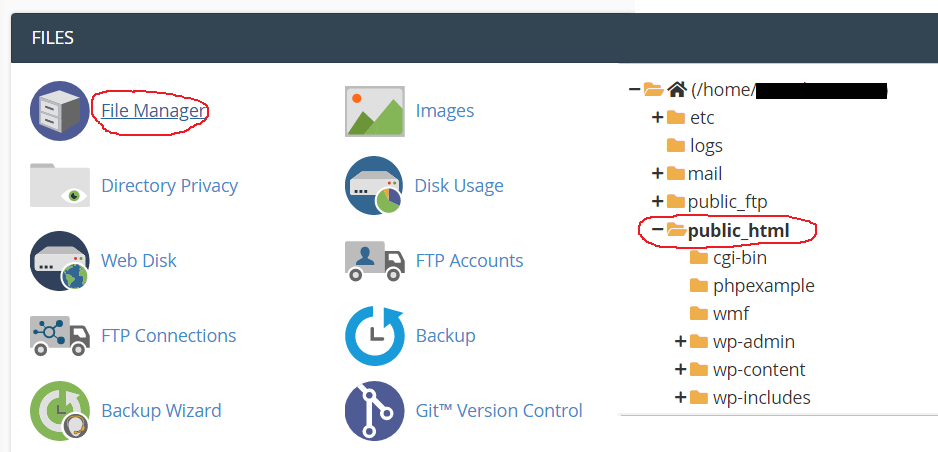
Write below code:
RewriteCond %{HTTPS} off
RewriteRule ^(.*)$ https://%{HTTP_HOST}%{REQUEST_URI} [L,R=301]
- Simply open it and avoid duplicating RewriteEngine On.
- Instead, search for RewriteCond and write down the code given above and also search RewriteRule and copy and paste the above code., which is exactly under an existing RewriteEngine On
For WordPress Sites
There’s another option of installing a Really Simple SSL plugin for those who have a WordPress site. Once you install it in WordPress, simply configure that plugin and update your site URL address with HTTPS.
Resources and Other Installation Guides
95%OFF
Comodo Positive SSL
78%OFF
RapidSSL Certificate
95%OFF